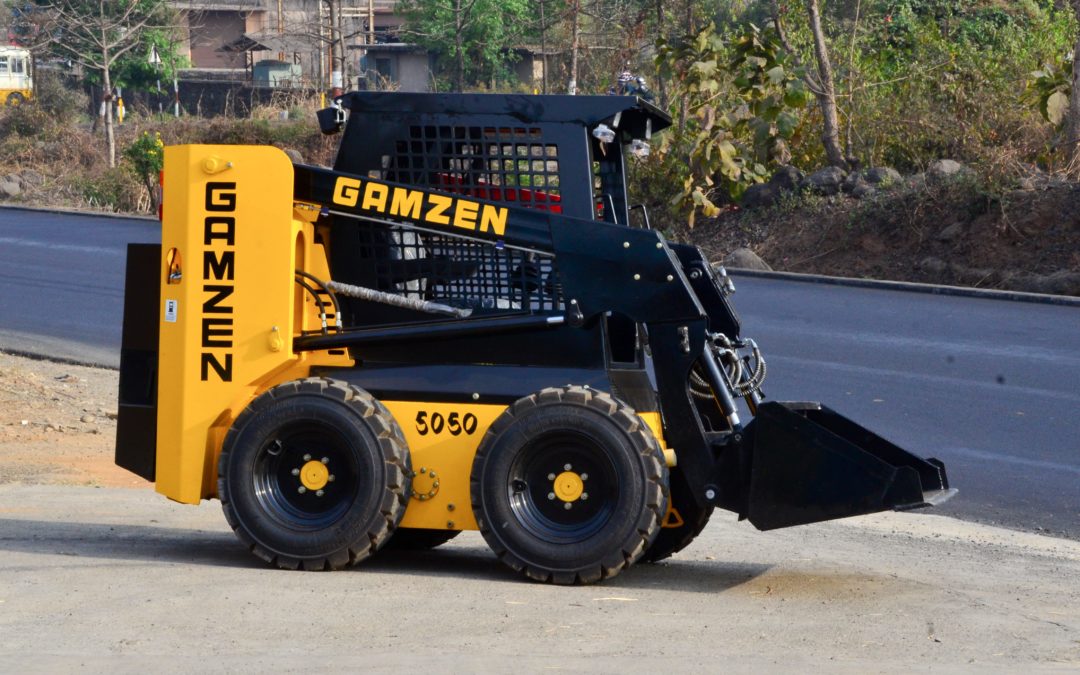Understanding Skid-Steer Loaders
Skid-steer loaders, also known as skid-steer loaders or SSL, are compact heavy equipment with lift arms that can attach to various buckets and other tools or attachments. These machines have fixed straight-aligned wheels and use differential steering for turning, allowing them to achieve zero-radius turning. Skid-steer loaders are highly maneuverable and useful for applications in confined-space work areas. They can perform tasks such as pushing, carrying, loading, digging, and grading operations, making them versatile in various work environments.
Invented by the Keller brothers in 1957, skid-steer loaders gained popularity and development in the 1960s. They are typically four-wheeled or tracked vehicles with independent transmissions for the left and right-side wheels, allowing for differential steering. These machines require skilled operators with good coordination, manual dexterity, and the ability to perform multiple actions simultaneously for safe operation.
Choosing the Right Skid-Steer Loader
When selecting a skid-steer loader, there are several factors to consider.
Firstly, it is essential to assess the specific needs of the job to determine the required operating capacity, engine horsepower, and lift height. Understanding the weight of the materials to be moved and the height at which they need to be lifted is crucial in choosing the right skid-steer loader.
Additionally, operators should consider the available space and terrain conditions at the job site. Compact skid-steer loaders are suitable for narrow and confined spaces, while larger models are better suited for open areas. The type of tires or tracks should also be taken into account based on the ground conditions, as it can impact the machine’s traction and maneuverability.
Furthermore, operators should evaluate the comfort and ergonomics of the machine. Features such as adjustable seats, easy-to-reach controls, and excellent visibility contribute to operator comfort and safety. It is also important to consider the ease of maintenance and serviceability of the skid-steer loader, as regular maintenance is essential for optimal performance and longevity.
Understanding different loader-arm designs is another crucial aspect of choosing the right skid-steer loader. Radial lift machines are cost-effective and are preferred for work at lower lift heights, while vertical lift machines offer greater operating height and reach. Selecting the appropriate loader-arm design based on the intended applications will ensure efficient and productive operation.
Safety is paramount when operating skid-steer loaders. Proper operator training is essential to ensure safe and effective use of the machine. Skid-steer loaders have limited visibility and operators need to be aware of their surroundings at all times. Safety features such as rollover and falling object protective structures, seatbelts, and operator restraints are essential for preventing injuries. Operators should also follow all recommended safety guidelines and wear appropriate personal protective equipment.
Customizing Skid-Steer Loaders with Attachments
Skid-steer loaders can be customized and optimized for specific tasks by using attachments. Bobcat offers a comprehensive range of attachments that can enhance the capabilities of skid-steer loaders. These attachments are designed to be easily attached and detached from the loader’s hydraulic system, providing versatility and flexibility on the job site.
Some common attachments for skid-steer loaders include buckets for digging and carrying materials, snow blowers for clearing snow, trenchers for creating trenches, pallet forks for lifting and moving heavy loads, and mowers for cutting grass and vegetation. These attachments enable skid-steer loaders to perform a wide range of tasks and increase their overall productivity.
Hydraulic-powered attachments are particularly popular as they utilize the skid-steer loader’s hydraulic system for operation. This eliminates the need for additional power sources and allows for seamless integration with the machine. Some hydraulic attachments, such as augers and hydraulic hammers, provide powerful and efficient performance for drilling holes or breaking through tough materials.
In addition, some skid-steer loader models feature an automatic attachment changer mechanism. This mechanism allows for quick and efficient changing of attachments without the need for manual intervention. It saves time and increases productivity by minimizing downtime between tasks that require different attachments.
FAQs
What are the key factors to consider when choosing a skid loader?
When choosing a skid loader, it is important to consider factors such as the required operating capacity, engine horsepower, lift height, available space at the job site, terrain conditions, comfort and ergonomics, ease of maintenance, and operator safety features.
How can I determine the right size and capacity of a skid loader for my application?
To determine the right size and capacity of a skid loader for your application, consider the weight of materials to be moved and the height at which they need to be lifted. Assess the available space and terrain conditions at the job site, as well as the operator’s comfort and visibility requirements.
What are the main types of attachments available for skid loaders and how do I choose the right ones?
The main types of attachments available for skid loaders include buckets, snow blowers, trenchers, pallet forks, mowers, augers, and hydraulic hammers, among others. To choose the right attachments, consider the specific tasks you need to perform and select attachments that are compatible with your skid loader’s hydraulic system.
What are the maintenance requirements for skid loaders and how can I ensure optimal performance?
Skid loaders require regular maintenance to ensure optimal performance. This includes checking and changing the engine oil and filters, inspecting and lubricating moving parts, inspecting and replacing worn-out parts, and keeping the machine clean. Following the manufacturer’s maintenance recommendations and guidelines will help ensure the longevity and performance of your skid loader.

